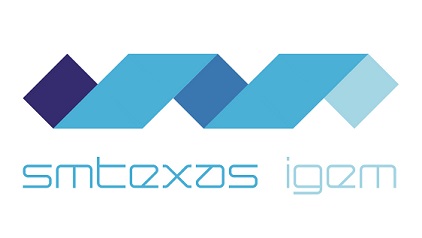Team:SMTexas
From 2014hs.igem.org
| Line 34: | Line 34: | ||
{|align="justify" | {|align="justify" | ||
|You can write a background of your team here. Give us a background of your team, the members, etc. Or tell us more about something of your choosing. | |You can write a background of your team here. Give us a background of your team, the members, etc. Or tell us more about something of your choosing. | ||
| - | |[[Image:SMTexas_logo.png|200px| | + | |[[Image:SMTexas_logo.png|200px|center|frame]] |
|- | |- | ||
| | | | ||
Revision as of 17:44, 16 March 2014
- a team description
- project description
- safety information (did your team take a safety training course? were you supervised in the lab?)
- team attribution (who did what part of your project?)
- lab notebook
- sponsor information
- other information
Example: 2013hs.igem.org/Team:SMTexas/Our_Pets
| You can write a background of your team here. Give us a background of your team, the members, etc. Or tell us more about something of your choosing. | |
|
Tell us more about your project. Give us background. Use this as the abstract of your project. Be descriptive but concise (1-2 paragraphs) | File:SMTexas team.png Your team picture |
| Team SMTexas |
| Official Team Profile |
|---|
Contents |
Team
Tell us about your team, your school! We are a nondenominational independent school in Dallas, Texas.
Project
Lung cancer is the leading cause of cancer-related death around the world. Early detection systems would enable us to diagnose the disease at a time when therapeutic intervention would be most effective. Noninvasive breath sampling has the potential to save lives as approximately 86% of lung cancer patients die within five years of diagnosis. Early detection improves survival rate by 50% from stage III to stage I of the cancer. Breath biochemical sensors also have important applications for other diseases. According to the World Health Organization’s latest report on noncommunicable diseases (NCDs), these “diseases are the leading global causes of death, causing more deaths than all other causes combined.” Further research into these noninvasive tests while maintaining the tests’ accuracy and sensitivity could have a major impact on survival rates of other NCDs. Tests of this nature would reduce inequity and provide improved means of treatment for affected individuals regardless of nationality, income, or access to healthcare.
While invasive techniques, such as immunofluorescence and Western Blotting already exist to detect the Epidermal Growth Factor Receptor (EGFR) biomarker, breath chemical tests via genetically modified Escherichia coli bacteria would be a novel and versatile method of lung cancer screening. Twenty-two volatile organic compounds (VOCs) have been found to be unique to the breath of affected patients, creating a viable “fingerprint” for reliable detection (Horvath et al.). We will utilize these concepts to create a biosensor for lung cancer.
Our team will design a system combining existing BioBricks along with novel synthesized biological parts to create a whole-cell bacterial sensor. We will attempt to create a breath biosensor through noninvasive intervention of lung cancer. Implementing recombinant DNA technology, the bacteria will be able to respond to environmental queues through a receptor-dependent pathway. The construct will fuse a DNA response element with reporter genes to create a portable biosensor. We are currently investigating E. coli promoters or alternative sigma factors in relation to our intended target compounds.
Notebook
On Tuesday, February 18th, Vikrant R, Rohin M, and Gopal R, inoculated bacterial strains A & B onto LB agar with ampicillin & kanamycin and incubated overnight at 37C.
On Wednesday, February 19th, Vikrant R & Rohin M transferred one colony from each of A & B and inoculated in LB BROTH with ampicillin & kanamycin and placed in shaking water bath at 37C.
The next step is to perform a miniprep, which will allow us to extract plasmid from each A & B bacterial strains, which will then allow us do the restriction digest and ligation.
All of these steps can be seen in the 3A Assembly kit protocols
Results/Conclusions
What did you achieve over the course of your semester?
Safety
What safety precautions did your team take? Did you take a safety training course? Were you supervised at all times in the lab?
Attributions
Who worked on what?
Human Practices
What impact does/will your project have on the public?
Fun!
What was your favorite team snack?? Have a picture of your team mascot?
<forum_subtle />
 "
"
